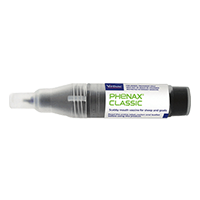
Scabby Mouth: Prevention in Lambs
What is Scabby Mouth?
Scabby mouth is a very infectious viral disease predominantly seen in sheep but also able to infect goats, deer, dogs and humans! It is most common in young stock such as lambs and hoggets, but older animals can be infected, especially in the face of a high challenge.
The organism is a parapox virus with an affinity for the skin. While infection is self-limiting, it occurs in outbreaks affecting up to 90% of a mob and causes major production loss as animals are unable to suckle or eat. Lesions can be complicated by becoming infected or flystruck. Adult ewes may have their udders affected and due to pain refuse to allow lambs to suckle. There are also the public health issues of passing on disease to shearers or meat workers.
Lesions start off as small “papules” which look slightly raised, nodular and sometimes discoloured. These tend to coalesce to create a larger “pustule” and then painful suppurative scabs. Lesions are mostly seen on the lips, around the mouth, other areas of the face and ears. The teats of ewes are quite commonly affected but you may see lesions on the vulva, scrotum and feet!
Once a property is affected the disease tends to reappear seasonally and it is thought that some animals may act as carriers. It is well recognised that trauma leading to broken skin can be a major contributing factor – e.g. thistles or other abrasive plants.
Depending on the predisposing factors, such as heavily thistle paddocks, and the immune status of the flock outbreaks can be quite variable. Animals affected tend to produce an antibody response which is protective but quite short lived [several months], meaning that animals become susceptible again later in the season or for the next year.
Preventing Scabby Mouth
Treating animals in the face of an outbreak is difficult and not particularly successful except for preventatively reducing bacterial infection or fly strike. To try and limit spread an antiseptic [e.g. iodine] + glycerine [to soften scabs] may be useful.
In reality, the best management is to utilise vaccination which will usually provide good protection for up to 8 months, thereby covering the season. Vaccinations use a live vaccine so be careful in handling it as you can create lesions on exposed skin. Also avoid use of disinfectants as they could inactivate the vaccine! The vaccine uses a wire applicator to create a scratch in the skin. These are usually given in the thigh or axilla [armpits] at docking; they should be deep enough to scratch through the skin surface but not draw blood.
Good technique means following the instructions carefully but usually requires checking 20-30 5-8 days later to make sure you have a small reactive “take” indicating the vaccine has been effective.
Remember that paddock management and reducing the number of thistles etc is important as parapox viruses can overwhelm vaccination if the challenge is very high. While this form of outbreak is usually limited to more minor lesions and lower numbers affected [when vaccinated prior], it can still cause temporary production loss.
Virbac NZ produces the market leading scabby mouth vaccine which was developed and trialled here in New Zealand with NZ strains.
Click here for more information on Phenax® Classic.
Phenax® Classic is a Restricted Veterinary Medicine. Available only under Veterinary Authorisation. Registered pursuant to the ACVM Act 1997, No. A006422. See www.foodsafety.govt.nz for registration conditions.

